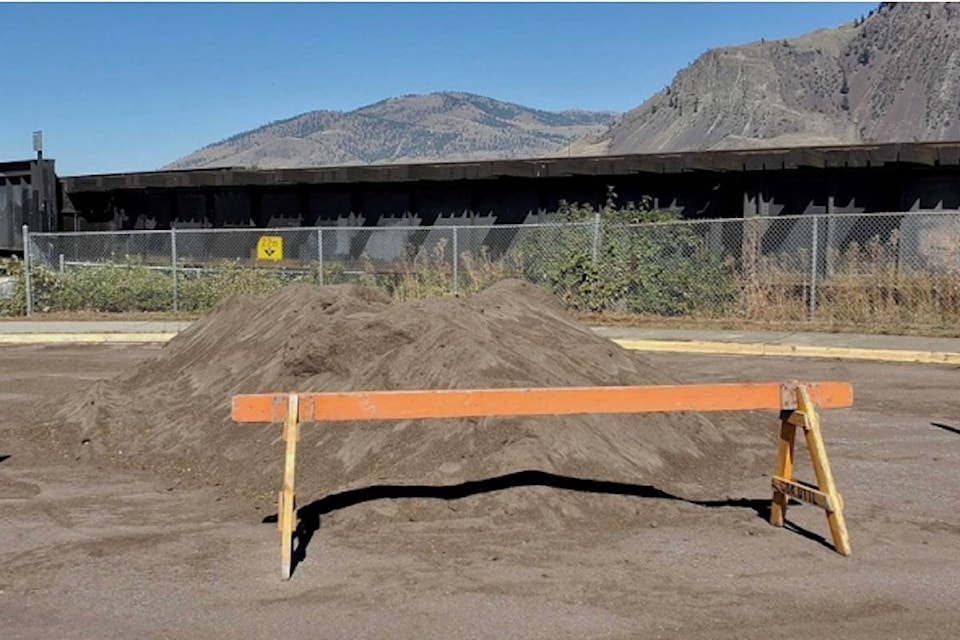The City of Kamloops is transporting its treated sewage sludge, also known as biosolids, to Princeton for composting, which in turn has helped to grow flowers, spruce up fields and reclaim worksites around Kamloops.
“It’s been extremely valuable for us,” city civic operations director Jen Fretz said. “The material that we’re getting back, the class A compost, is absolutely fantastic. We’re trying to use it everywhere we possibly can.”
The city said it has been working with Arrow Transportation to transport and manage its stockpile and ongoing production of biosolids at the sewage-treatment centre on Missions Flats Road via Arrow’s composting facility in Princeton, which is about two hours south of Kamloops.
The result is a retail-grade soil amendment, dubbed class A compost.
READ MORE: Watchdog launches probe after man fleeing police in Lytton found dead in river near Hope
Fretz said it is a medium-term solution to the city’s ongoing biosolids management, which she said has so far been successful. In the past year, composting has depleted the city’s biosolids stockpile to less than one-quarter of what it was and will also handle the city’s ongoing collection of biosolids for the foreseeable future.
“That’s the really good news,” Fretz said. “Most of the stockpile is gone. The significant portion is gone. Then, the rest of it will be gone probably by the end of the year. Then, we’re just dealing with the material that comes straight off of the process.”
The city has faced controversy when it comes to managing its biosolids. Barnhartvale and Turtle Valley residents pushed back in the past on land application. With a growing stockpile, the city has been seeking long-term solutions.
Composting began last September, Fretz said. Asked why composting was selected from several options previously presented to council, Fretz said the city has been challenged because the province continues to review its Organic Matter Recycling Regulation.
Fretz said the city has been told the regulatory update will include changes to locations of biosolids treatment facilities and, therefore, the city wants to wait for those changes before it invests into a facility. Princeton, meanwhile, already had an established facility.
Details of what kind of facility would be in Kamloops have not been worked out. It could be composting or otherwise.
“We didn’t even go there because we knew the regulations were under review,” Fretz said.
Asked about Princeton being on the receiving end of the city’s biosolids, Fretz said the city participated in public consultation, noting Princeton has good support from its area First Nations.
“Everybody’s aware of the facility, aware of what it’s treating, and there doesn’t seem to be any controversy at all,” she said. “There were lots of questions, really good questions, certainly. There didn’t appear to be anything controversial.”
READ MORE: Alleged racially-motivated eviction from Penticton campground sparks outcry
Once the biosolids are composted into a soil amendment, it is shipped back to Kamloops and has been used this past year by the city around Kamloops. Fretz said the soil amendment is nutrient rich and does not smell, noting the composting process destroys pathogens.
The city is using the product — which is retail quality — for capital projects, as well as operationally, enhancing flower beds, shrubs and sports fields. In fact, a pile of it is currently stacked up in the Sandman Centre parking lot, for use by the city to reclaim areas of Riverside Park impacted by Hesco flood barriers during freshet.
“It’s [soil amendment] being used all across the city,” Fretz said.
Meanwhile, Fretz said the city’s costs are about the same as the controversial biosolids land application in Turtle Valley. She said this year’s bill is $3.2 million, which includes getting rid of the city’s stockpile. Next year, it will cost the city $1.2 million for ongoing production.
“The hope is that because we are being able to use all of this product, eventually we will have a Kamloops solution,” she said.
Like us on Facebook and follow us on Twitter.